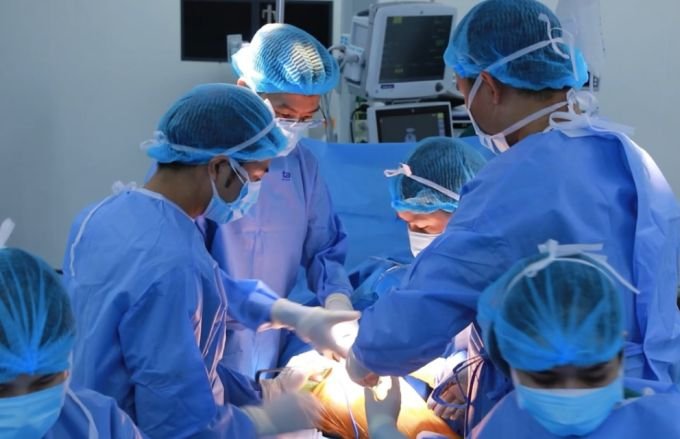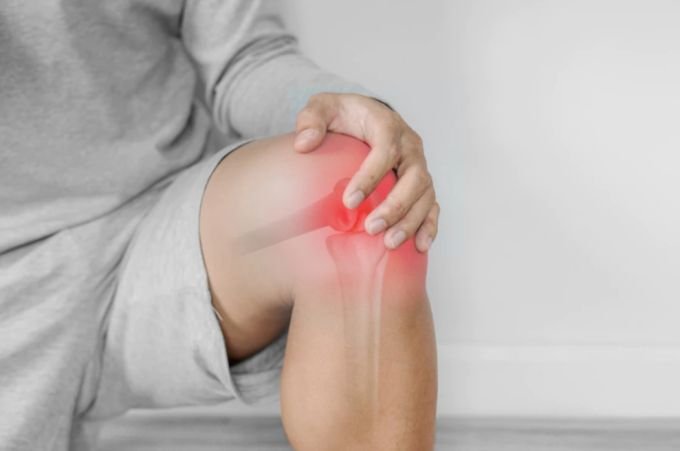Knee spurs are a condition in which bone spurs appear in a damaged knee joint.
In the early stages, bone spurs often have no obvious symptoms and are difficult to recognize.
MSc.BSc.CKI Dang Khoa, Center for Orthopedics, Tam Anh General Hospital System, said that although the signs of knee osteoarthritis are different for each person, in general, the disease often causes symptoms to appear.
Knee pain when exercising: This is the most common symptom in people with knee osteoarthritis.
Swollen knees: Erosion of knee cartilage causes the ends of the femur, tibia and sometimes the kneecap to rub against each other, causing irritation.
The knee is numb and loses feeling due to knee joint spurs overgrowing, compressing the surrounding nerves.
Knee stiffness often occurs in the morning or after sitting for a long time, and can last up to 30 minutes.

Doctor Science (second from left) in a surgery.
Doctor Science shared that knee osteoarthritis is common in the elderly, especially women;
Depending on the development of knee osteoarthritis as well as the extent to which this condition affects daily activities, the doctor will prescribe treatment methods such as medication, physical therapy and surgery.
In cases where oral pain relievers are not as effective as expected or the patient has gastrointestinal problems, the doctor may prescribe pain and inflammation relievers in the form of topical creams or local injections.
Another effective conservative treatment for musculoskeletal problems is physical therapy.
Surgery is the final treatment, which will simultaneously address damaged knee cartilage and remove bone spurs.










